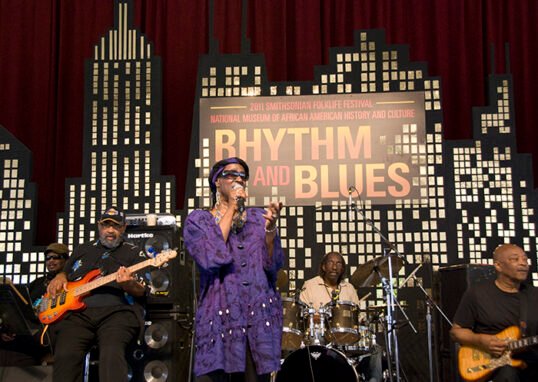Rock music, a genre that has profoundly shaped the landscape of popular music, has undergone a dynamic evolution since its inception in the 1950s. From the electrifying birth of rock ‘n’ roll to the diverse and genre-blending sounds of today, rock music has continuously reinvented itself, mirroring societal changes and technological advancements. In this comprehensive exploration, we delve into the major phases of rock music’s evolution and its enduring influence on contemporary culture.
The Birth of Rock ‘n’ Roll (1950s)
The 1950s marked the birth of rock ‘n’ roll, a revolutionary genre that emerged from the fusion of rhythm and blues, jazz, and country. This era was characterized by its energetic rhythms, catchy melodies, and the prominent use of electric guitars. Pioneering artists such as Chuck Berry, Elvis Presley, Little Richard, and Buddy Holly became icons of this new sound.
Key Characteristics:
- Upbeat Rhythms: Rock ‘n’ roll featured driving, danceable rhythms that captivated audiences.
- Electric Guitar: The electric guitar became the centerpiece of rock ‘n’ roll, with iconic riffs and solos.
- Youthful Themes: Lyrics often revolved around youthful rebellion, romance, and carefree attitudes.
Elvis Presley’s charismatic performances and Chuck Berry’s innovative guitar techniques were instrumental in establishing rock ‘n’ roll as a cultural phenomenon. This period also laid the foundation for the genre’s future evolution.
The British Invasion and Psychedelic Rock (1960s)
The 1960s saw a significant shift in rock music with the arrival of the British Invasion. Bands like The Beatles, The Rolling Stones, and The Who brought a fresh perspective to rock, blending elements of pop, blues, and folk. The Beatles, in particular, revolutionized rock music with their innovative studio techniques, diverse musical influences, and experimentation.

Key Characteristics:
- Studio Experimentation: The use of studio effects, multi-track recording, and unconventional instruments became prevalent.
- Complex Song Structures: Songs began to feature intricate arrangements and elaborate compositions.
- Cultural Impact: Rock music became intertwined with the counterculture movement, reflecting the social and political upheavals of the era.
Psychedelic rock emerged alongside the British Invasion, with bands like The Doors and Jefferson Airplane exploring experimental sounds and mind-altering themes. This period was marked by its vibrant, visually stimulating performances and the rise of iconic music festivals.
The Rise of Hard Rock and Heavy Metal (1970s)
The 1970s ushered in a new wave of rock music characterized by hard rock and heavy metal. Bands such as Led Zeppelin, Black Sabbath, and Deep Purple pushed the boundaries with louder, more aggressive sounds. This era also saw the emergence of arena rock, with bands like Queen and Aerosmith captivating audiences with elaborate stage shows.
Key Characteristics:
- Powerful Guitar Riffs: Hard rock and heavy metal featured heavy guitar riffs, virtuosic solos, and intense rhythms.
- Thematic Content: Lyrics often explored themes of rebellion, fantasy, and excess.
- Theatrical Performances: Live performances became more elaborate, incorporating elaborate light shows and stage effects.
This era solidified rock music’s dominance and introduced a new generation of fans to its powerful and electrifying sounds.
Punk Rock and New Wave (1980s)
The late 1970s and early 1980s saw the emergence of punk rock as a reaction against the perceived excesses of mainstream rock. Bands like The Ramones, The Clash, and the Sex Pistols embraced a raw, stripped-down sound and a DIY ethos. Punk rock’s rebellious spirit and straightforward approach contrasted sharply with the polished productions of earlier rock styles.
Key Characteristics:
- Raw Sound: Punk rock featured simple, fast-paced songs with minimalistic production.
- DIY Culture: The genre emphasized a do-it-yourself attitude, with bands often self-producing their music and organizing their tours.
- Authenticity: Punk’s emphasis on authenticity and rebellion resonated with a new generation of listeners.
At the same time, new wave emerged as a more polished alternative, incorporating punk’s energy with pop sensibilities and electronic elements. Bands like Talking Heads and Blondie brought a fresh, eclectic sound to the rock genre.
Grunge and Alternative Rock (1990s)
The 1990s saw the rise of grunge, a genre characterized by its raw, emotional sound and introspective lyrics. Bands like Nirvana, Pearl Jam, and Soundgarden brought grunge into the mainstream, blending elements of punk and heavy metal with a new, unpolished aesthetic. Grunge music reflected the angst and disillusionment of the era, challenging the conventions of mainstream rock.
Key Characteristics:
- Raw Emotion: Grunge music featured raw, emotional lyrics and a gritty sound.
- Genre Blending: Grunge combined elements of punk, metal, and alternative rock.
- Indie and Alternative Scenes: The 1990s also saw the rise of indie and alternative rock, with bands like Radiohead and R.E.M. pushing the boundaries of traditional rock.
This period was marked by a reaction against the excesses of the 1980s and a focus on authenticity and emotional expression.
The Digital Age and Modern Rock (2000s-Present)
The turn of the millennium brought significant changes to the music industry with the rise of digital platforms and streaming services. Bands like The White Stripes, The Strokes, and Arctic Monkeys gained popularity through online platforms, and the genre continued to evolve with a mix of traditional and new influences.
Key Characteristics:
- Digital Distribution: The internet and streaming services revolutionized how rock music was produced, distributed, and consumed.
- Genre Fusion: Modern rock often incorporates elements from various genres, including electronic, hip-hop, and indie.
- DIY Culture: The rise of social media and digital tools has enabled artists to self-produce and distribute their music.
Rock music remains a dynamic and influential genre, continually adapting to new technologies and cultural shifts. The genre’s ability to innovate and merge with other styles suggests that it will continue to evolve and thrive in the future.
The Future of Rock Music
As we look ahead, the future of rock music appears promising, with the potential for continued innovation and experimentation. The genre’s adaptability and its ability to incorporate new influences ensure that rock will remain a vital and evolving part of the music landscape.
Predictions:
- Integration of New Technologies: Advances in music production and distribution technologies will continue to shape the genre.
- Continued Genre-Blending: Rock music will likely continue to blend with other genres, creating new and diverse subgenres.
- Emerging Artists: New rock artists will emerge, bringing fresh perspectives and sounds to the genre.
In conclusion, the evolution of rock music reflects a rich and varied history, marked by its ability to adapt and innovate. From its rebellious beginnings to its diverse modern manifestations, rock music remains a powerful and enduring force in the world of music. Whether you’re a fan of classic rock or contemporary bands, the journey of rock music offers a captivating narrative that continues to influence and inspire.






